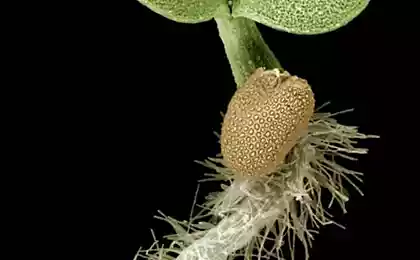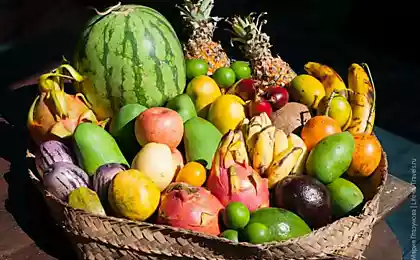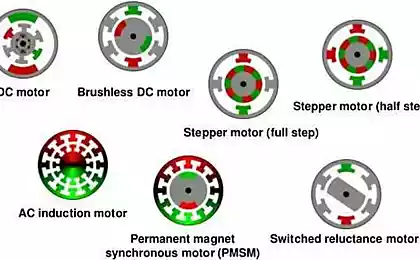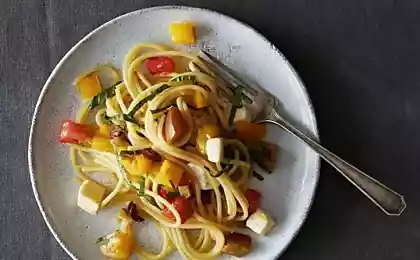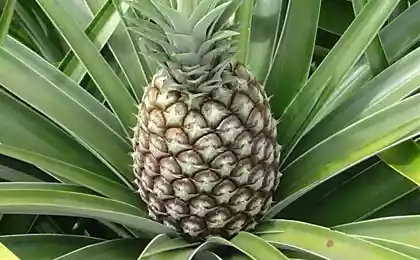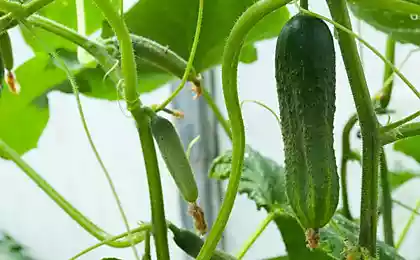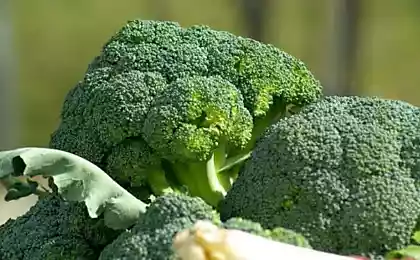1236
10 unusual hybrids and varieties of fruits and vegetables.
Every year on the shelves you can see more and more new hybrid fruits and vegetables. It recently was a normal pineapple for the Russian buyer of this exotic. Hybrids (fruits, which came into being as a result of cross-breeding species) quite firmly entrenched in stores such as hybrid fruits like nectarines and minioly and all, it now seems, it has always been.
Let's look at 10 of the most unusual fruits and vegetables that were born thanks to breeding.
10 photo + letter, the source
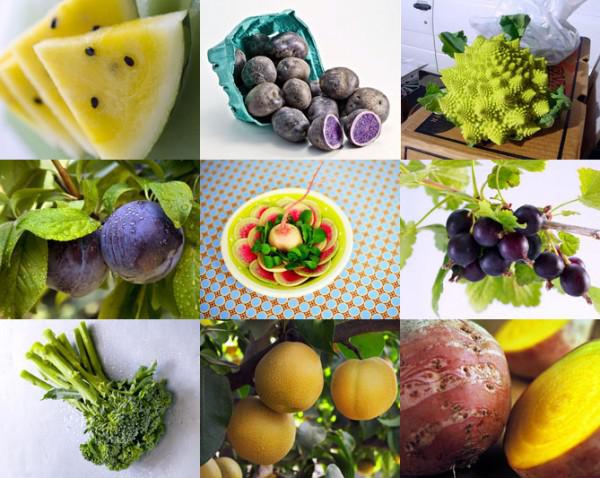
1. yellow watermelon, from 350 rubles per kg
Energy value: 38 kcal
Useful elements: vitamins A, C
In appearance it is a regular striped watermelon, but inside it is bright yellow. But in addition to the unusual color of the watermelon contains very little, compared to a conventional, seeds. This watermelon was born as a result of interbreeding of wild watermelon, which is just a yellow (although there can not be), with the usual. Now round yellow watermelons grown in the summer in Spain, and oval - in the winter in Thailand. By the way, there is a yellow watermelon especially respected, because in the Thai beliefs yellow color attracts money. Watermelon This tender and juicy, although not as sweet as red.
In Russia, too, has a yellow watermelon, and they come from Astrakhan. Ten years on breeding new varieties heads the department selection melons irrigated Russian Research Institute of Vegetables and Melons, Sergei Sokolov, until finally he was able to get a variety that has called "The Moon." By the way, the Russian variety - unlike the foreign - very sweet and exotic taste, about which opinions differ: whether it is a lemon, or mango, or pumpkin.
It is said that experiments on the removal of yellow watermelon walked for a long time. For example, Ukrainian breeders are less fortunate than Russia. As a result, crossing they got a hybrid called "kavbuz", which took on the flavor of watermelon only, and the rest went into a pumpkin. It is best used for cooking porridge.
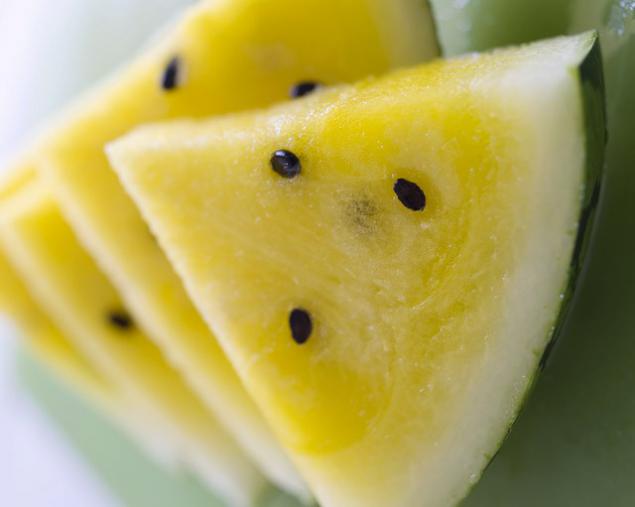
2. Purple potatoes, £ 1, 50 per package 1, 25 kg
Energy value: 72 kcal
Useful elements: B vitamins, vitamin C, potassium, magnesium, iron and zinc
No one will be surprised potatoes with yellow, pink or purple skin. But potatoes, purple inside - this is something new. Her appearance we owe scientists from Colorado State University, who have long been working on a potato from the Andean highlands, have not yet received an outstanding violet color. This rich color potato owes its high content of anthocyanins, which have antioxidant properties, by the way, is retained after cooking.
More than any other potato varieties "Purple Majesty", which is widely sold in England for about six months (on sale potato arrived on the eve of Halloween), suitable climate of Scotland, where it is now and grow.
Popularizing unusual root among housewives contributed to English culinary guru Jamie Oliver, who is not afraid to experiment. From this original mashed potatoes get rich violet-blue color, it looks good in the company of other baked vegetables, not to mention the fries. The taste purple potatoes is different from the usual.
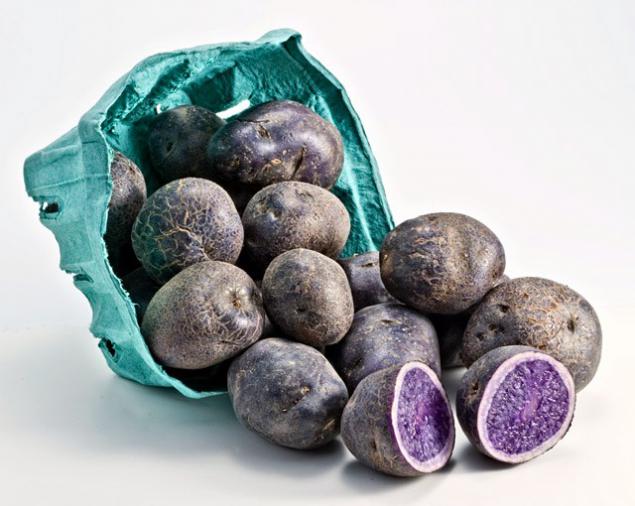
3. Cabbage romanesco, from 230 rubles per kg
Energy value: 25 kcal
Useful elements: carotene, mineral salts, vitamin C, zinc
A vegetable that looks like an alien, a close relative of cauliflower and broccoli, but his pale green blossoms are not rounded, and a cone-shaped and are arranged in a spiral on Kocani. By the way, its shape serves as an occasion for jokes. It is said that a head of romanesco dropped out of flying saucer somewhere in Italy, where it sprouts from. The true story of the emergence of romanesco is more prosaic: a broad sell it appeared about 10 years ago, and its popularization served as Dutch breeders, which are slightly improved vegetable familiar Italian housewives since the XVI century.
In romanesco many nutrients, and low in fiber, whereby it is easy to digest. An important fact for parents who want to force the child to eat cabbage: in the preparation of romanesco there is no characteristic odor of cabbage, which do not like children. In addition, exotic kind of space vegetable certainly cause a desire to try it. Cook can be like a normal romanesco broccoli - boiled, stewed, added to salads and pasta.
Unusual vegetable shines not only in the kitchen, but also in science. Mathematicians say that the example of Romanesco can be explained by the geometric concept of "fractal".
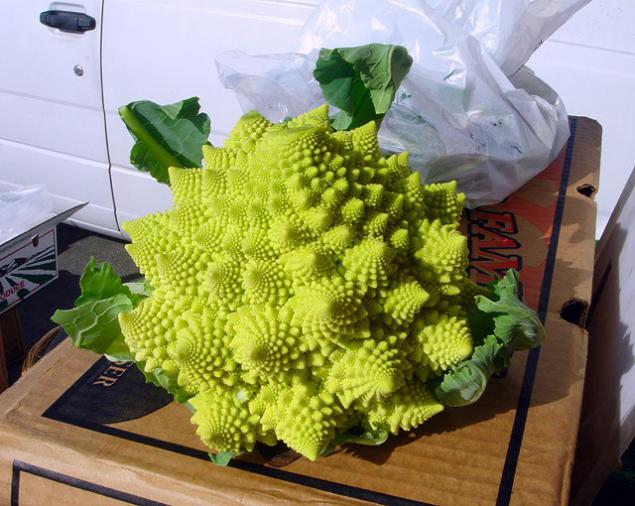
4. Pluot from 942 rubles per kg
Energy value: 57 kcal
Useful elements: vitamin C, fiber
A hybrid of apricot and plum, pluot named for the first and the last syllable of two English words: plum (plum) and apricot (apricot). In pluota, which is more still went to the sink, there is a brother - Aprium that, in contrast, is more like an apricot.
Outside pluot can be pink, green, burgundy and purple, and inside - from white to deep plum. The authors of this fruit levy royalties of about $ 2 per seedling. He was taken in 1989 in a California nursery Dave Wilson Nursery, where the first seedlings grown conventional fruit trees for sale, and then began to create their own varieties. Today in the world there are eleven varieties pluota, Aprium two varieties, one kind nektaplama (a hybrid of nectarine and plum), as well as some sort of pichplama (a hybrid of peach and plum).
It is said that from pluota make excellent juice, desserts, and even home-made wine. And fresh it is a real treat, because pluot much sweeter as the plum and apricot.
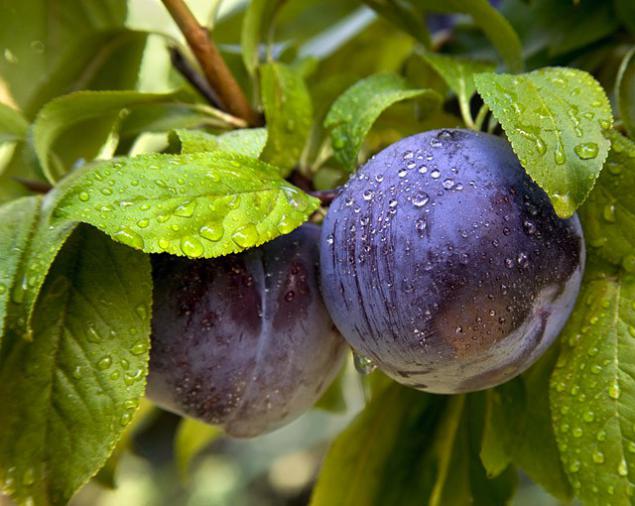
5. Watermelon radish, from $ 2, 97 for a bag of seeds
Energy value: 20 kcal
Useful elements: vitamin C, folic acid
Watermelon radishes like turned inside out - crimson, he is not outside, but inside. On top of the covers of his white-green skin that makes it look like a watermelon. The shape and size of the radish like a medium-sized turnip or radish, and its diameter is 7-8 cm. Outside, radishes, as expected, bitter, and closer to the heart becomes sweet. However, it is not as crisp and juicy, like a normal variety, and much harder.
Watermelon radish is recommended to bake, make him a puree, add to the vegetables for frying or in a salad. Very impressive look of watermelon radish slices, sprinkled with black sesame and black as salt. In California, this dish - restaurant hit. For beams best watermelon radish buyers go to the farmer's markets. In Russia, this vegetable is easy to grow in the country.
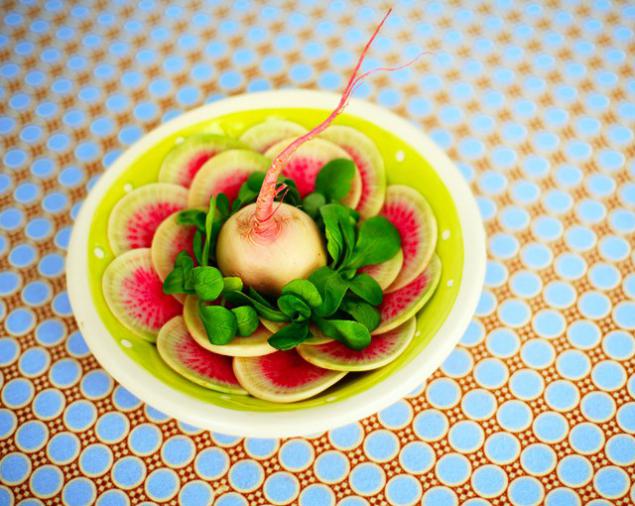
6. Jošt, £ 9, 95 of the seedling
Energy value: 40 kcal
Useful elements: vitamins C, P, anthocyanins, which have antioxidant properties
To give the name of the fruit of love currant and gooseberry, Jošt, joined the two German words johannisbeere (currant) and stachelbeere (gooseberry). Berries Jošt almost black in color, the size of a cherry, are sweet and sour taste, a little nice to knit and give currants.
Create value with gooseberry currant, but without thorns dreamed even Michurin. He managed to bring gooseberry dark purple color, which was called "Black Moor". Around the same time in Berlin he worked on the creation of hybrid Paul Lorenz. By 1939, he grew seedlings in 1000, of which intended to select the best, but the Second World War. And only by 1970 the German scientist Rudolf Bauer was able to create the perfect hybrid. Now there are two kinds of Jošt: "Black" and "Red", burgundy-brown and pale-red colors, respectively.
Bush Jošt of the season brings a 7-10 kg of berries, which are used in desserts, home-made, and even to flavor soda. Jošt advised to eat in the gastro-intestinal diseases, to improve blood circulation and excretion of radioactive substances and heavy metals.
Jošt, like currants, a rare visitor to the stores and buy it only at farmers' markets. Or collected from the bush grown in his dacha.
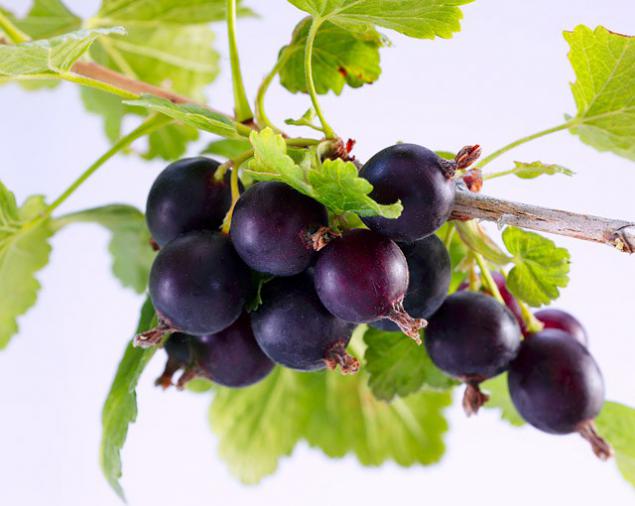
7. Brokkolini, $ 2, 29 for the beam
Energy value: 43 kcal
Useful elements: vitamins A, C, calcium, iron, folic acid, fiber
Hard to believe that Brussels and savoy cabbage, broccoli and cauliflower - relatives. Recently, a number of cabbage happened addition. As a result, crossing the usual broccoli and vegetable gaylan (Chinese broccoli) has turned the plant, like the asparagus with a head of broccoli on top. Brokkolini not have sharp spirit of cabbage, a bit sweet, with a hint of pepper, sweet taste, reminiscent of broccoli and asparagus at the same time. New vegetable contains a lot of useful substances and nizkokalorien.
In the United States, Spain, Brazil, Asia brokkolini - familiar side dish. Usually it is a lightly fried in oil or served fresh, poured oil. Brokkolini feels great in Oriental and Italian dishes.
For true fans brokkolini excellent vacancy exists on a farm in Australia Stanthorpe. An hour weeding, collecting and banding in bunches brokkolini employer offers $ 17.
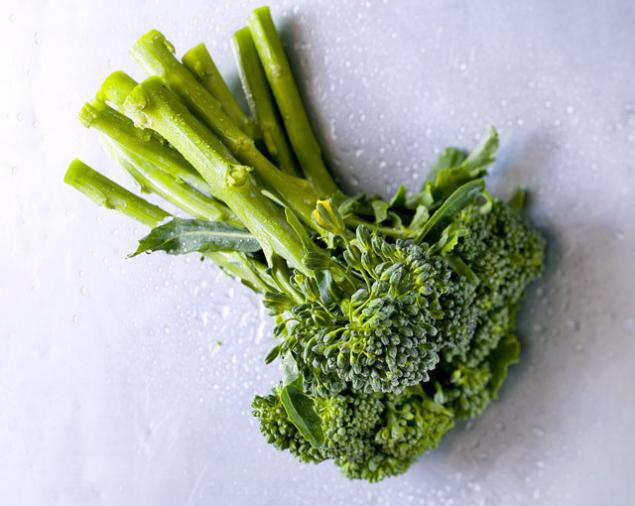
8. Neshi, from 119 rubles per kg
Energy value: 46 kcal
Useful elements: antioxidants, calcium, phosphorus, fiber
Neshi - a hybrid of apples and pears, cultivated for centuries in Asia. Also called Asian, sand, water, or the Japanese pear. Round apple taste is juicy, crisp pear. The color of the fruit - from pale green to orange. Yablokogrusha has an advantage over conventional bulb: it is harder, so it carries the transportation and storage.
Use fruit better solo or in salads because neshi contains a lot of water, which is not good for the heat treatment. In addition, neshi serves as an appetizer for wine with grapes and cheese. There are about 10 varieties especially popular commercial neshi that are grown in the United States, Australia, New Zealand, Chile, France and Cyprus.
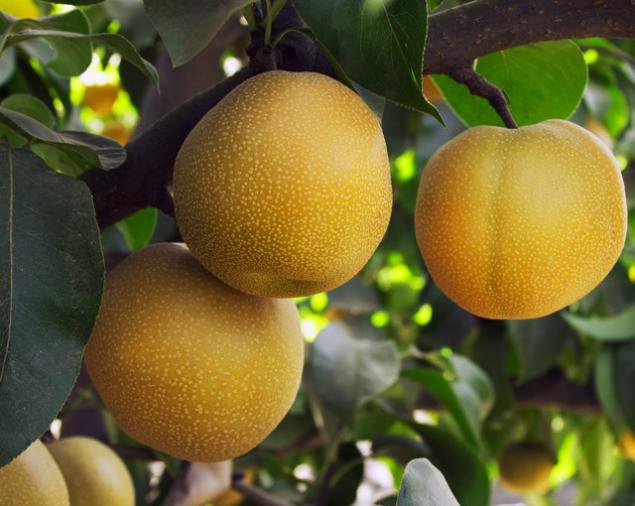
9. Hughes, $ 1, 99 per share
Energy value: 30 kcal
Useful elements: vitamin C
Yuzu, a Japanese or a lemon - a hybrid of a tangerine and ichangskoy papedy (ornamental citrus). Yellow or green fruit with a lumpy skin the size of a tangerine has a bright flavor and sour taste. It is used by the Japanese still from the VII century, when Buddhist monks brought it to the island with the mainland. The fruit is also popular in cooking Korea and China.
Hughes, in most cases used for perfumes. He has a terrific flavor - citrus with floral notes and hints of pine needles. Zest of yuzu - one of the most popular Japanese seasonings. It is used for meat and fish dishes, added to miso soup, noodles. Based peel made alcoholic and non-alcoholic drinks, jams, syrups, desserts. Sour, fragrant and not as straightforward as lemon, yuzu juice is used as vinegar, it also serves as the basis for the popular ponzu sauce.
Hughes is not only used in cooking. This fruit is a member of the Japanese festival of the winter solstice, which is celebrated on December 22. On this day, children and adults are taking a bath with yuzu fruit, symbolizing the sun. The hot water is fragrant fruit, and even more, according to popular belief, drives away evil forces. It is believed that after a bath with yuzu people a year will not hurt the common cold, especially after water procedures snack pumpkin, another symbol of the sun. The yuzu-bath dip and pets, and the remaining plants are watered with water.
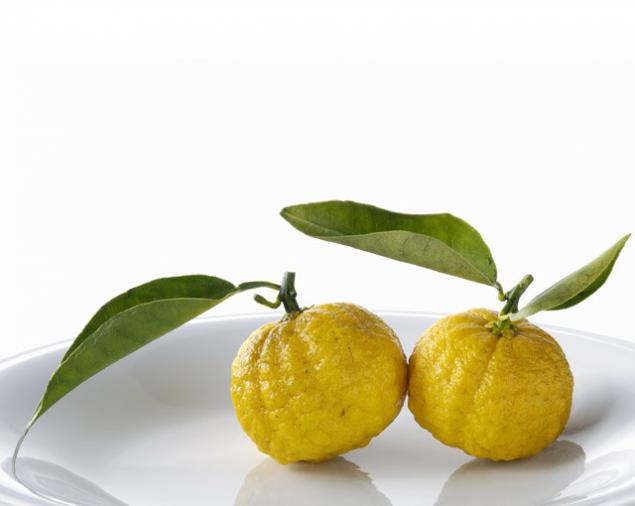
10. Yellow beets, $ 3 per bundle of 49
Energy value: 50 kcal
Useful elements: folic acid, vitamin A, potassium, fiber
Unlikely to yellow, or as it is called, golden beets, will be recognized in the Russian market. The mind boggles yellow soup, beetroot soup, salad, herring under a yellow coat. But the Americans, far from Russian cooking traditions, on the contrary, did not quite appreciate the yellow beets - it does not get dirty when cooking.
To taste this vegetable from the familiar to us is virtually identical. The same sweet, fragrant, ready to make friends with any product - from cheese and smoked up citrus, good in baked form, and even in chips. Leaves yellow beets can be used fresh in salads.
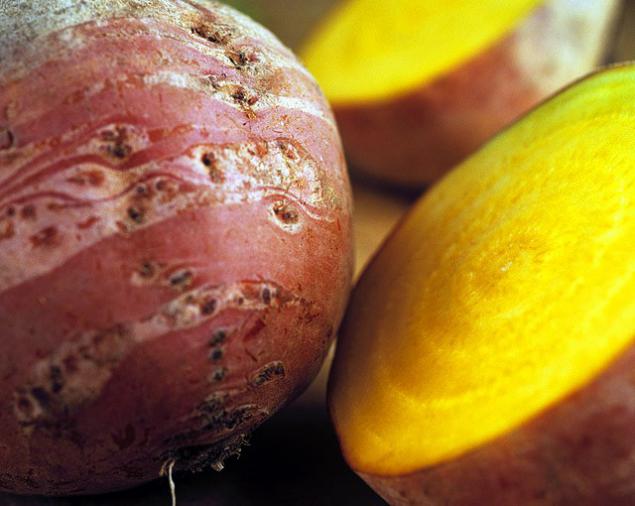
Source:
Let's look at 10 of the most unusual fruits and vegetables that were born thanks to breeding.
10 photo + letter, the source

1. yellow watermelon, from 350 rubles per kg
Energy value: 38 kcal
Useful elements: vitamins A, C
In appearance it is a regular striped watermelon, but inside it is bright yellow. But in addition to the unusual color of the watermelon contains very little, compared to a conventional, seeds. This watermelon was born as a result of interbreeding of wild watermelon, which is just a yellow (although there can not be), with the usual. Now round yellow watermelons grown in the summer in Spain, and oval - in the winter in Thailand. By the way, there is a yellow watermelon especially respected, because in the Thai beliefs yellow color attracts money. Watermelon This tender and juicy, although not as sweet as red.
In Russia, too, has a yellow watermelon, and they come from Astrakhan. Ten years on breeding new varieties heads the department selection melons irrigated Russian Research Institute of Vegetables and Melons, Sergei Sokolov, until finally he was able to get a variety that has called "The Moon." By the way, the Russian variety - unlike the foreign - very sweet and exotic taste, about which opinions differ: whether it is a lemon, or mango, or pumpkin.
It is said that experiments on the removal of yellow watermelon walked for a long time. For example, Ukrainian breeders are less fortunate than Russia. As a result, crossing they got a hybrid called "kavbuz", which took on the flavor of watermelon only, and the rest went into a pumpkin. It is best used for cooking porridge.

2. Purple potatoes, £ 1, 50 per package 1, 25 kg
Energy value: 72 kcal
Useful elements: B vitamins, vitamin C, potassium, magnesium, iron and zinc
No one will be surprised potatoes with yellow, pink or purple skin. But potatoes, purple inside - this is something new. Her appearance we owe scientists from Colorado State University, who have long been working on a potato from the Andean highlands, have not yet received an outstanding violet color. This rich color potato owes its high content of anthocyanins, which have antioxidant properties, by the way, is retained after cooking.
More than any other potato varieties "Purple Majesty", which is widely sold in England for about six months (on sale potato arrived on the eve of Halloween), suitable climate of Scotland, where it is now and grow.
Popularizing unusual root among housewives contributed to English culinary guru Jamie Oliver, who is not afraid to experiment. From this original mashed potatoes get rich violet-blue color, it looks good in the company of other baked vegetables, not to mention the fries. The taste purple potatoes is different from the usual.

3. Cabbage romanesco, from 230 rubles per kg
Energy value: 25 kcal
Useful elements: carotene, mineral salts, vitamin C, zinc
A vegetable that looks like an alien, a close relative of cauliflower and broccoli, but his pale green blossoms are not rounded, and a cone-shaped and are arranged in a spiral on Kocani. By the way, its shape serves as an occasion for jokes. It is said that a head of romanesco dropped out of flying saucer somewhere in Italy, where it sprouts from. The true story of the emergence of romanesco is more prosaic: a broad sell it appeared about 10 years ago, and its popularization served as Dutch breeders, which are slightly improved vegetable familiar Italian housewives since the XVI century.
In romanesco many nutrients, and low in fiber, whereby it is easy to digest. An important fact for parents who want to force the child to eat cabbage: in the preparation of romanesco there is no characteristic odor of cabbage, which do not like children. In addition, exotic kind of space vegetable certainly cause a desire to try it. Cook can be like a normal romanesco broccoli - boiled, stewed, added to salads and pasta.
Unusual vegetable shines not only in the kitchen, but also in science. Mathematicians say that the example of Romanesco can be explained by the geometric concept of "fractal".

4. Pluot from 942 rubles per kg
Energy value: 57 kcal
Useful elements: vitamin C, fiber
A hybrid of apricot and plum, pluot named for the first and the last syllable of two English words: plum (plum) and apricot (apricot). In pluota, which is more still went to the sink, there is a brother - Aprium that, in contrast, is more like an apricot.
Outside pluot can be pink, green, burgundy and purple, and inside - from white to deep plum. The authors of this fruit levy royalties of about $ 2 per seedling. He was taken in 1989 in a California nursery Dave Wilson Nursery, where the first seedlings grown conventional fruit trees for sale, and then began to create their own varieties. Today in the world there are eleven varieties pluota, Aprium two varieties, one kind nektaplama (a hybrid of nectarine and plum), as well as some sort of pichplama (a hybrid of peach and plum).
It is said that from pluota make excellent juice, desserts, and even home-made wine. And fresh it is a real treat, because pluot much sweeter as the plum and apricot.

5. Watermelon radish, from $ 2, 97 for a bag of seeds
Energy value: 20 kcal
Useful elements: vitamin C, folic acid
Watermelon radishes like turned inside out - crimson, he is not outside, but inside. On top of the covers of his white-green skin that makes it look like a watermelon. The shape and size of the radish like a medium-sized turnip or radish, and its diameter is 7-8 cm. Outside, radishes, as expected, bitter, and closer to the heart becomes sweet. However, it is not as crisp and juicy, like a normal variety, and much harder.
Watermelon radish is recommended to bake, make him a puree, add to the vegetables for frying or in a salad. Very impressive look of watermelon radish slices, sprinkled with black sesame and black as salt. In California, this dish - restaurant hit. For beams best watermelon radish buyers go to the farmer's markets. In Russia, this vegetable is easy to grow in the country.

6. Jošt, £ 9, 95 of the seedling
Energy value: 40 kcal
Useful elements: vitamins C, P, anthocyanins, which have antioxidant properties
To give the name of the fruit of love currant and gooseberry, Jošt, joined the two German words johannisbeere (currant) and stachelbeere (gooseberry). Berries Jošt almost black in color, the size of a cherry, are sweet and sour taste, a little nice to knit and give currants.
Create value with gooseberry currant, but without thorns dreamed even Michurin. He managed to bring gooseberry dark purple color, which was called "Black Moor". Around the same time in Berlin he worked on the creation of hybrid Paul Lorenz. By 1939, he grew seedlings in 1000, of which intended to select the best, but the Second World War. And only by 1970 the German scientist Rudolf Bauer was able to create the perfect hybrid. Now there are two kinds of Jošt: "Black" and "Red", burgundy-brown and pale-red colors, respectively.
Bush Jošt of the season brings a 7-10 kg of berries, which are used in desserts, home-made, and even to flavor soda. Jošt advised to eat in the gastro-intestinal diseases, to improve blood circulation and excretion of radioactive substances and heavy metals.
Jošt, like currants, a rare visitor to the stores and buy it only at farmers' markets. Or collected from the bush grown in his dacha.

7. Brokkolini, $ 2, 29 for the beam
Energy value: 43 kcal
Useful elements: vitamins A, C, calcium, iron, folic acid, fiber
Hard to believe that Brussels and savoy cabbage, broccoli and cauliflower - relatives. Recently, a number of cabbage happened addition. As a result, crossing the usual broccoli and vegetable gaylan (Chinese broccoli) has turned the plant, like the asparagus with a head of broccoli on top. Brokkolini not have sharp spirit of cabbage, a bit sweet, with a hint of pepper, sweet taste, reminiscent of broccoli and asparagus at the same time. New vegetable contains a lot of useful substances and nizkokalorien.
In the United States, Spain, Brazil, Asia brokkolini - familiar side dish. Usually it is a lightly fried in oil or served fresh, poured oil. Brokkolini feels great in Oriental and Italian dishes.
For true fans brokkolini excellent vacancy exists on a farm in Australia Stanthorpe. An hour weeding, collecting and banding in bunches brokkolini employer offers $ 17.

8. Neshi, from 119 rubles per kg
Energy value: 46 kcal
Useful elements: antioxidants, calcium, phosphorus, fiber
Neshi - a hybrid of apples and pears, cultivated for centuries in Asia. Also called Asian, sand, water, or the Japanese pear. Round apple taste is juicy, crisp pear. The color of the fruit - from pale green to orange. Yablokogrusha has an advantage over conventional bulb: it is harder, so it carries the transportation and storage.
Use fruit better solo or in salads because neshi contains a lot of water, which is not good for the heat treatment. In addition, neshi serves as an appetizer for wine with grapes and cheese. There are about 10 varieties especially popular commercial neshi that are grown in the United States, Australia, New Zealand, Chile, France and Cyprus.

9. Hughes, $ 1, 99 per share
Energy value: 30 kcal
Useful elements: vitamin C
Yuzu, a Japanese or a lemon - a hybrid of a tangerine and ichangskoy papedy (ornamental citrus). Yellow or green fruit with a lumpy skin the size of a tangerine has a bright flavor and sour taste. It is used by the Japanese still from the VII century, when Buddhist monks brought it to the island with the mainland. The fruit is also popular in cooking Korea and China.
Hughes, in most cases used for perfumes. He has a terrific flavor - citrus with floral notes and hints of pine needles. Zest of yuzu - one of the most popular Japanese seasonings. It is used for meat and fish dishes, added to miso soup, noodles. Based peel made alcoholic and non-alcoholic drinks, jams, syrups, desserts. Sour, fragrant and not as straightforward as lemon, yuzu juice is used as vinegar, it also serves as the basis for the popular ponzu sauce.
Hughes is not only used in cooking. This fruit is a member of the Japanese festival of the winter solstice, which is celebrated on December 22. On this day, children and adults are taking a bath with yuzu fruit, symbolizing the sun. The hot water is fragrant fruit, and even more, according to popular belief, drives away evil forces. It is believed that after a bath with yuzu people a year will not hurt the common cold, especially after water procedures snack pumpkin, another symbol of the sun. The yuzu-bath dip and pets, and the remaining plants are watered with water.

10. Yellow beets, $ 3 per bundle of 49
Energy value: 50 kcal
Useful elements: folic acid, vitamin A, potassium, fiber
Unlikely to yellow, or as it is called, golden beets, will be recognized in the Russian market. The mind boggles yellow soup, beetroot soup, salad, herring under a yellow coat. But the Americans, far from Russian cooking traditions, on the contrary, did not quite appreciate the yellow beets - it does not get dirty when cooking.
To taste this vegetable from the familiar to us is virtually identical. The same sweet, fragrant, ready to make friends with any product - from cheese and smoked up citrus, good in baked form, and even in chips. Leaves yellow beets can be used fresh in salads.

Source:

